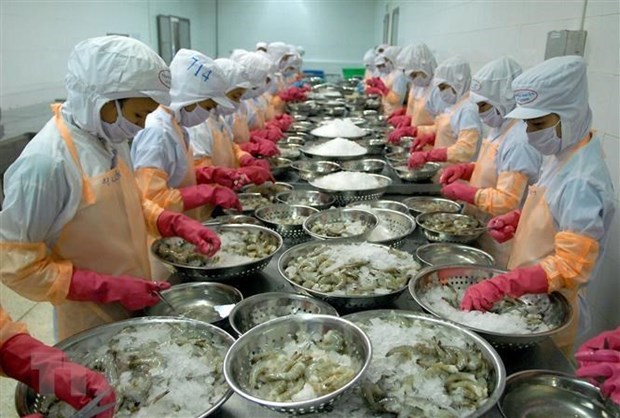(seafood.vasep.com.vn) Seafood exports in February 2024 were estimated at 564 million USD, down 8% over the same period last year. This decline is still a positive number because February this year coincided with Lunar New Year holiday in Vietnam. Accumulated in the first 2 months of the year, seafood exports reached over 1.3 billion USD, up 23% over the same period in 2023.

In the first month of this year, exports have increased by 64% over the same period in 2023. After a continuous decline from the fourth quarter of 2022, exports from the fourth quarter of 2023 tended to be more positive and had a strong breakthrough in January, when the demand for goods for the Lunar New Year in many markets increased, especially in China and Asian countries. Part of it also caters to Vietnamese and Asian consumers in other markets.
After the Lunar New Year, normally demand levels off a bit, so exports to China do not increase as strongly as in January. However, Lent season has started, so the demand for seafood has returned in Western countries and many markets.
By the end of February, shrimp and tuna exports both increased by 37% over the same period, while pangasius exports increased by 15% and other fish increased by 8%. Particularly, cephalopod exports decreased slightly by 1%.
Shrimp exports have positive signals in many markets, such as China, the US, Japan, Canada, and Australia. In particular, in the Chinese market, demand is recovering well, while competitive exporter Ecuador is being warned about sulfite on shrimp, and the problem of increased freight due to the Red Sea tension also causes Ecuadorian shrimp imports to China to decline.
Ecuador, however, is more focused on the US and EU markets, so competitive pressure is greater in these markets.
Pangasius export prices to the US and EU both bottomed out in the last months of 2023 but recovered slightly in January, but export prices to China were still significantly lower than in previous years.
Inventory problems and oversupply are still affecting the consumption and import of main aquatic species such as shrimp, pangasius, etc.
Seafood exports are still in a difficult period because the IUU yellow card problem causes the procedures of catch certification and catch statement of seafood caught for export to the EU to be stalled. While lacking domestic raw materials, enterprises also face difficulties with imported materials because of IUU-related regulations.
In March and April 4, seafood enterprises will participate in the International Seafood Fairs in Boston, USA, and Barcelona, Spain, so expecting more positive results for their orders after these events.